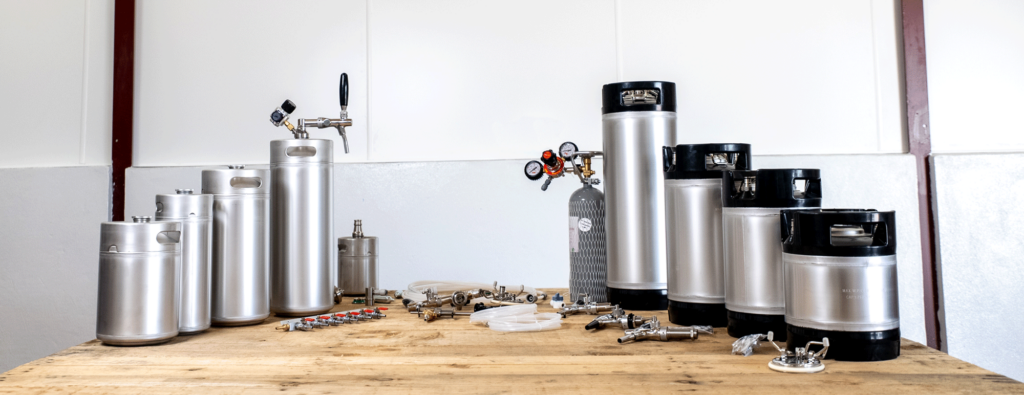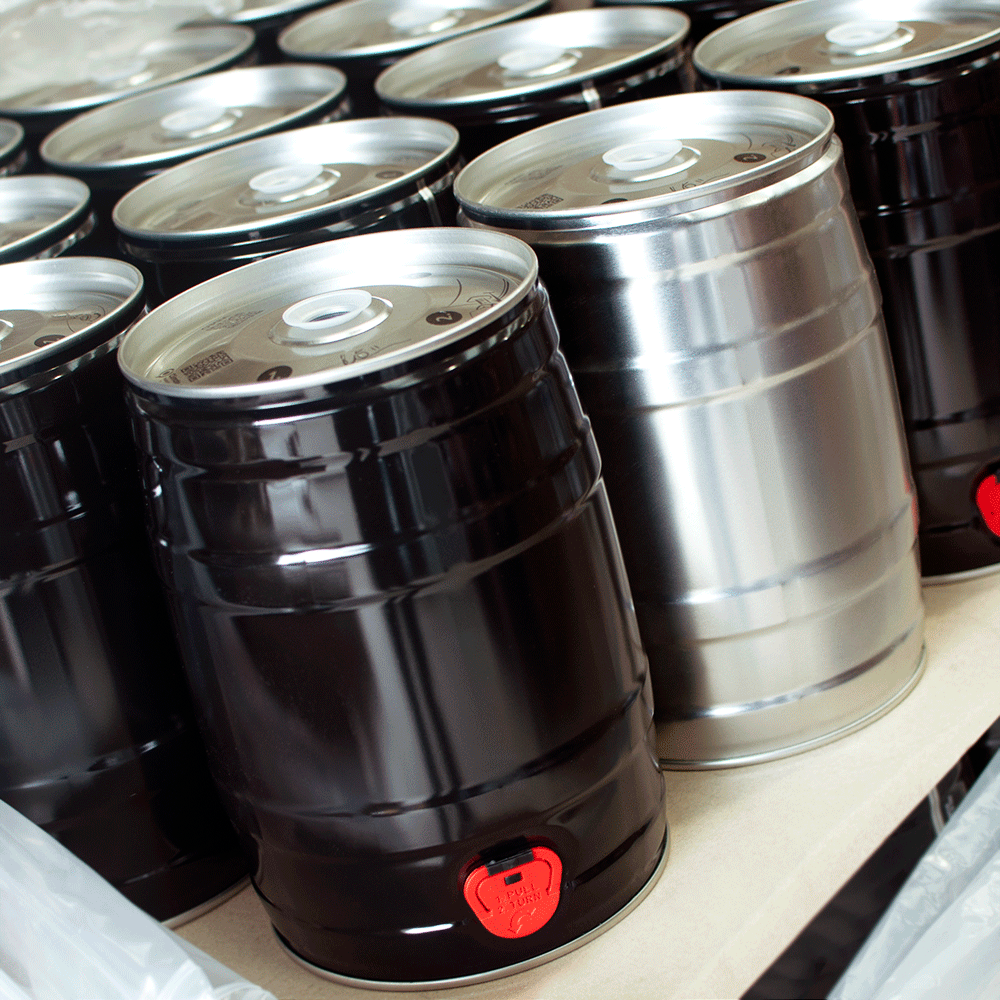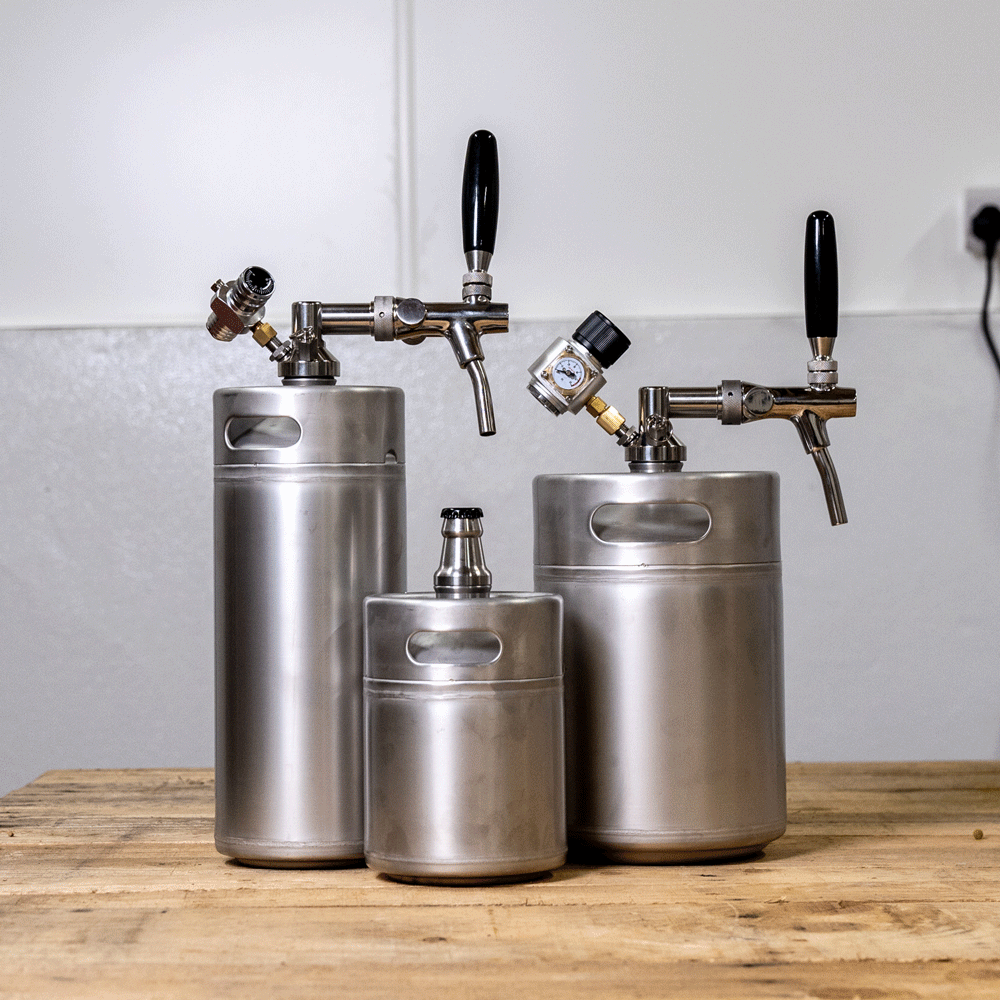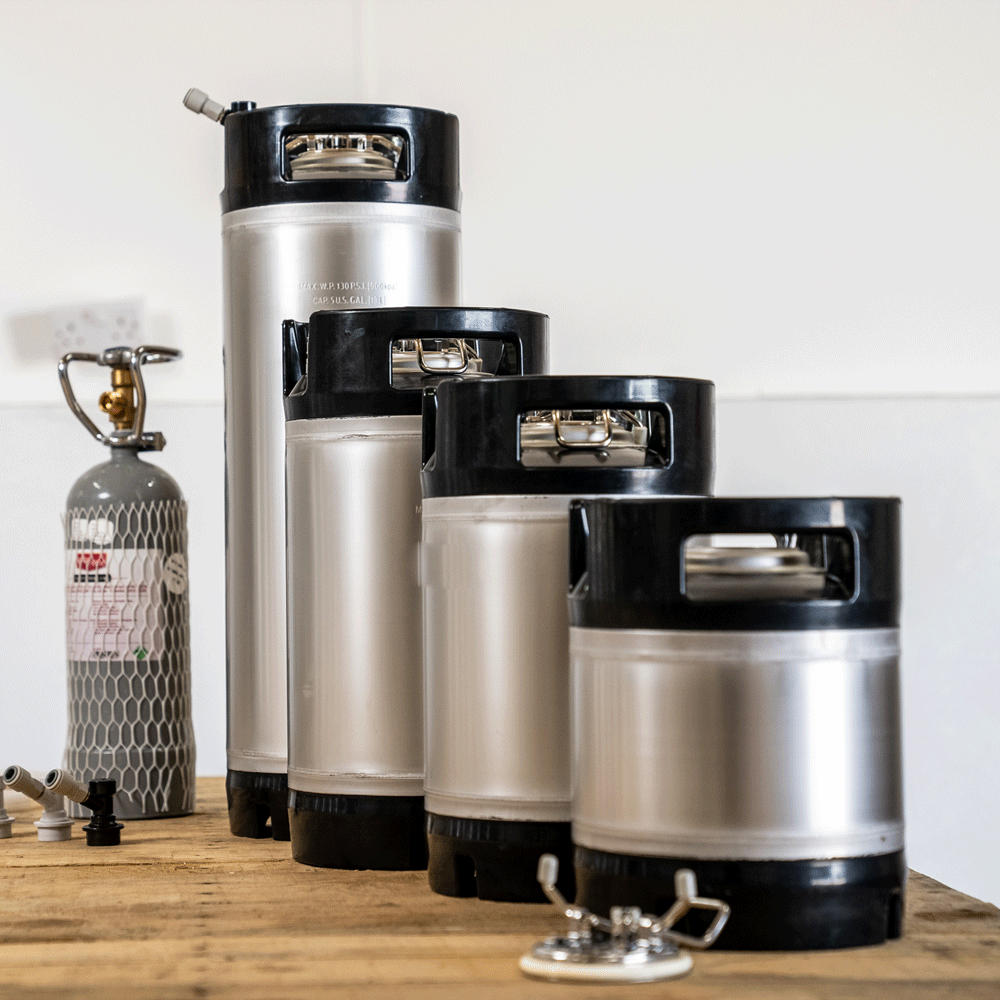
Homebrew Kegging can seem daunting, especially when it comes to using CO2 gas. Kegging your homebrew is easier than you think and much quicker than bottling.
There are several ways to get into kegging your homebrew.
- 5-litre Maturing Barrels: Perfect for the fridge at home and a relatively cheap way to try a keg
- SS (Stainless Steel) Mini Kegs: These usually come with a dispensing attachment on the top of the keg. Available in multiple sizes with various dispensing options
- Cornelius (Corny) Kegs: The most popular home kegging system for homebrewers, versatile and available in multiple sizes of kegs
Have you grown tired of filling and capping bottles? Are interested in keg your brews? You can still carbonate naturally or force carbonate in a keg. Then you can package your beer and carbonate it quicker than bottling.
Option 1 – 5 litre Maturing Barrels
If we look at option one for kegging, it’s using the 5-litre maturing barrels. After primary fermentation, using priming sugar, you can use a maturing barrel for natural carbonation. Priming sugar is required at a rate of 2-3 g per litre. When filling the mini keg, use some silicon tubing from your fermenter to the mini keg. We suggest adding your priming sugar just before you start transferring to ensure it gets mixed well. Once the sugar is added and the beer is transferred in, seal and place back into your fermentation chamber. Use a temperature range of 18-25 degrees and allow it to secondary ferment and carbonate the beer.
Option 2 – Stainless Steel Mini Kegs
Option two is using the SS Mini kegs. Being slightly smaller than Cornelius kegs makes them great for taking to events and parties. They are easily transported and often dispensed using co2 bulbs. The SS Mini Keg can be used for secondary fermentation, or it can be force carbonated. Force carbonating with bulbs will use approx. 5-6 bulbs for a small SS mini keg, so it. Geterbrewed suggest these for easy transporting of beer
Option 3 – Cornelius kegs
Cornelius kegs (aka Corny Keg) come with ball lock disconnects to allow you to easily set up a home keg system. The Corny keg is a stainless steel vessel with a large lid and ball lock posts, allowing for the addition of liquid and gas. A Cornelius keg setup will allow you to carbonate beer with a co2 tank. You can use a Cornelius keg to carbonate. Naturally, you can carbonate with a carbonation stone and saturate over time or force carbonate quickly using a co2 tank. We recommend getting a 2kg co2 tank and a regulator. Set up gas and liquid pouring using john guest fittings, hard and clear beer line and ball lock disconnects.



Kegging Homebrew Basics
As with everything in brewing, cleaning and sterilising all your kegging equipment is critically important. We suggest you pay attention to all components and use a good quality cleaning and sanitising product.
CO2 tanks and a CO2 regulator are used to carbonate and assist with dispensing beer in a corny keg. The CO2 tank can be easily refilled. We recommend the 2kg CO2 tank as a good size for dispensing up to 400 litres of beer. The co2 regulator has two dials. The dial on the top reads the dispensing pressure. The dial on the left at the side is the pressure left in the tank. The knob on the front of the regulator adjusts the dispensing pressure. A tip for setting up your CO2 and regulator is ensuring the fittings are correctly secured. If required, use some PTFE plumbers tape to create a secure seal. As you thread in the knob, the more the pressure will build.
The regulator is connected via a hard and clear beer line, and a ball-lock disconnects. Grey or white ball lock disconnects refer to a gas ball lock. The black disconnects refer to the liquid ball locks. You can also add a gas manifold or shut-off taps to the beer line. This allows you to expand your flexibility of gas supply to multiple uses.
The Corny keg can be filled and sealed using tubing and gravity or a siphon into the open lid. Also, consider a closed transfer or pressure transfer to reduce the risk of infection. Use ball lock disconnects and hard and clear beer lines. It’s best to add a blanket of co2 to protect the beer. Ensure the lid is sealed correctly; you can pull the ring pull on the lid to purge the last of the headspace.
Carbonating in a corny keg
- Natural Carbonating. Using priming sugar.
- Saturation over time using a carbonation stone. Leaving constant pressure over time. If the beer is below 4 degrees, it will absorb the CO2.
- Force carbonation by shaking CO2 into the solution. Attaching a gas supply to one of the ball lock connectors and rolling the keg back and forth. This creates more liquid surface area for the co2 to hit; it does need to be cold enough to absorb the co2
Check out the website for all the kegging options
https://www.geterbrewed.com/complete-keg-sets-and-accessories/
We have made some youtube videos to help also.